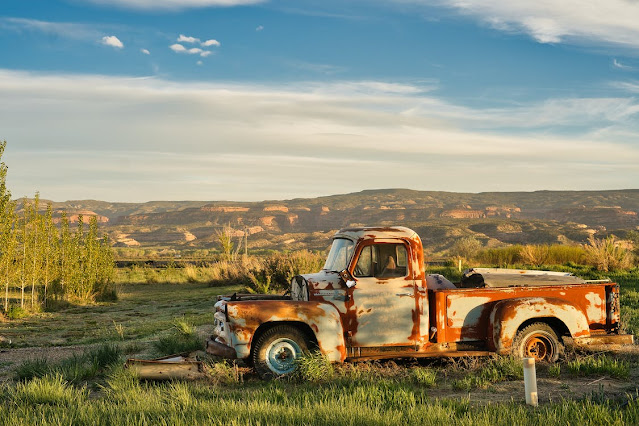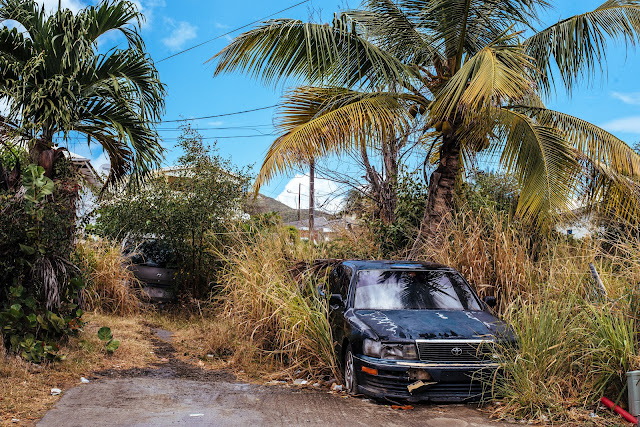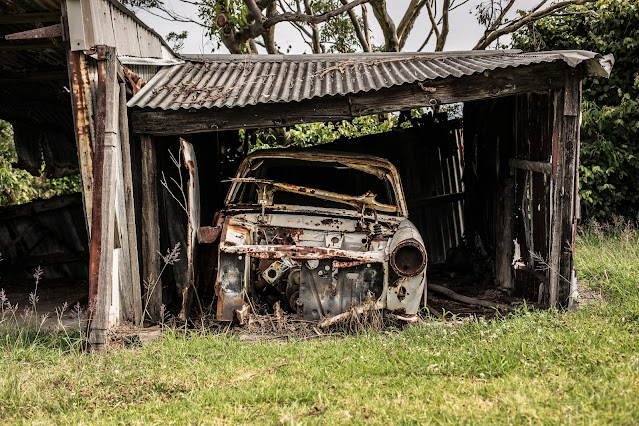What Should I Do If My Old Car Won’t Start?
If your old car won't start, it's frustrating. You've spent time, money, and effort to make it run, only to suddenly stop working when you need it most. Luckily there are some things that you can do during this time to get your car back on the road as quickly as possible:
Check your battery.
If your car won't start, the first thing you should do is
check the battery. A loose connection or corrosion on the terminals may have caused it to fail. If this is the case, there are several things
you can do:
● Look
for corrosion around any connections between your car and the battery pack. Before trying again, you may
need to clean up any loose dirt or debris from these areas.
● Make
sure that both ends of the cables connecting them are firmly attached so they
don't come apart when turned over in their sockets during hot weather (e.g., leaving at night). If one end comes off easily while driving
down a steep hill with high winds blowing across it while someone else tries
turning theirs over too quickly because they're scared it will fall off if they
don't hurry!
Tighten the cable connections.
A good starting point is to tighten any loose cables. Be sure to check the battery connections, alternator connections, and starter connections. Also, check your fuel pump and spark plug wire connections, distributor cap rotor assembly, air filter housing gasket or O-ring sealant (if used), vacuum hose routing around hoses and clamps or clips used with vacuum hoses, etc...
● Check
the spark plugs and wires.
● Check
that they are not loose, damaged, or burnt out.,
Check the fuel pump.
If you have a newer car, it's unlikely that your fuel pump
is bad. Instead, check the following:
● The
fuel pump relay (if your car has one) is located on top of the fuse box and is usually connected to another circuit breaker by a short cord called an
"instantaneous" or "breakaway" wire. Check this
circuit before replacing any other components to eliminate other
possibilities, such as corrosion on the relay contacts or corrosion between them
and their mounting brackets.
● If
you need to replace just one component, ensure it's not one of these
other things! For example, some people think that if there isn't any smoke coming
from underneath their vehicle's hood, then everything should be fine; however, this isn't true because sometimes problems can go unnoticed until something
breaks down later down the road, which could lead to severe issues like
overheating due lack
Check if something is wrong with your alternator (or timing belt).
If your car doesn't start, you can do a few things to try and find out what's wrong. First, check for any problems with
the alternator (or timing belt). Alternators are part of the car's charging
system and generate electricity for the electrical components in your vehicle.
They're connected to the engine and can fail over time from wear or damage, but
if this happens, it may be easier for a mechanic or auto repair shop to
replace them on their own than deal with other problems that could be
causing your issue.
Check the distributor cap.
● Check
the distributor cap. If you can see a crack, then replace it.
● Check
the rotor and replace it if it is damaged or worn out.
● Check
each spark plug to ensure they're not worn down and replace them
accordingly (they should last around 15,000 miles).
Try cleaning your fuel injectors.
If your car won't start and you can't figure out what's
wrong, the first thing to do is to try cleaning your fuel injectors. They're
located in the engine and help keep it running smoothly by sending a
constant fuel stream into each cylinder. However, if they're dirty or clogged with
bits of debris, this extra pressure can prevent them from working correctly.
To clean them properly:
● Remove
the fuel injector by unscrewing its retaining screw (a tiny Allen wrench will
work). Make sure not to lose any parts!
● Use
a toothbrush and some brake cleaner on an old rag or paper towel to scrub away
any dirt or grime inside the nozzle. This will help eliminate any
build-up that might prevent proper flow through all four cylinders.* Clean off everything else there, too; remove excess
corrosion from underneath if possible.* Dry off everything thoroughly before
reassembling everything back together, so nothing gets stuck inside the next time you drive somewhere crucial, like work or school again!
If everything else has failed, you may want to consider selling your junk
car for cash to a junkyard near you?
If you have tried everything else and your car won't start, it may be time to consider selling your junk car for cash. The first step
is finding a junkyard near you that will pay top dollar for old vehicles. After that, you can
use the Internet or contact local auto recyclers directly.
If you don't know where to start looking or whether there's
even one nearby, we've provided some tips below:
● Find
a junkyard in your area that specializes in buying junk cars from owners who
want their vehicles gone as soon as possible – because people often don't
realize how much money they could make if they sold their old clunker instead
of keeping it around the long term (and paying storage fees).
● Search online forums such as Craigslist or Autotrader for listings from local dealerships offering free estimates on how much someone might get paid when selling used vehicles; these are usually posted by dealers, so they don't have any competition! This way, someone doesn't have an unfair advantage since everyone knows what kind of price range exists before making any negotiations...
What Should I Do If My Old Car Won't Start?
If you have an old car that won't start, you can try a few things before calling a tow truck or mechanic. Check the battery first by pulling off the negative cable and then putting it back on. Then, try to turn the key again. If there is no response from your starter motor after this, try jumping it with another vehicle.
If the car starts, you know your battery is dead and needs replacing. If it doesn't start after this, check your starter motor by removing the cover and turning the key in the lock.
Why is my car not starting, but the battery isn't dead?
If your car doesn't start, it could be for several reasons. The most common is that the battery is dead or dying. A dead battery can cause issues with starting and running the engine properly. If you notice any of these symptoms when trying to start your vehicle: -A clicking sound from the starter motor but no movement when turning the key in its lock -A clicking sound from under the bonnet but no lights come on when you turn on your headlights.
How long can a car sit before it doesn't start?
A clicking sound when you turn the key in its lock -A clicking sound from under the bonnet, but no lights come on when you turn on your headlights. If your car doesn't start and these symptoms are present, it may be time to replace your battery. But, of course, other issues could be at play if it's been sitting for more than a month or two.
How long can a car sit and not be used?
A car can sit for quite a long time before it needs to be fixed or replaced. The amount of time depends on the type of battery used in your vehicle, how well you maintain it and how often you drive it.
Most batteries can last for about three to five years, but some can last as little as one. When your battery dies, you'll notice a clicking sound when you start your car. This means it's time to replace your battery if this happens more than once or twice.
Conclusion
If you are in an unfortunate situation where your
car won't start, don't panic! Many things can cause this problem, and it is highly possible that the pain is not as severe as it seems. You
may want to call a mechanic or check out their website to see if they can help you
with repairs or parts needed for repair.
Read Also: The Five Best Places to buy junk cars in Fort Lauderdale.



.png)

Comments
Post a Comment